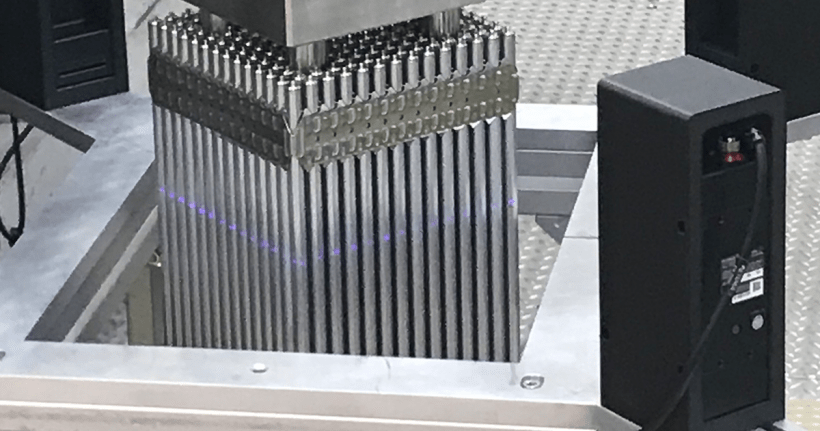Mining at McArthur River takes place between 530 and 640 meters belowground. (Photo: Cameco)
Citing “improving market sentiment,” Tim Gitzel, president and chief executive officer of the Canadian uranium mining company Cameco, announced on February 9 the planned restart of operations at the McArthur River mine in Saskatchewan.
ADOPT fuel pellets developed by Westinghouse through the DOE's Accident Tolerant Fuel Program. (Photo: Westinghouse)
Westinghouse Electric Company and Southern Nuclear have agreed to a plan to install four Westinghouse lead test assemblies in Vogtle-2, a 1,169-MWe pressurized water reactor located in Waynesboro, Ga. Four lead test assemblies containing uranium enriched up to 6 percent U-235 will be loaded in Vogtle-2 in 2023, marking the first time that fuel rods with uranium enriched above 5 percent U-235 are put in use in a U.S. commercial power reactor.
Artist’s conception of Oklo’s Aurora powerhouse. (Image: Gensler)
The TRISO-X fuel pebble shown here contains TRISO particles—HALEU-bearing kernels of oxide and carbide in alternating layers of pyrolytic carbon and silicon carbide. (Image: X-energy)
X-energy and Centrus Energy announced last week that they have completed the preliminary design of the TRISO-X fuel fabrication facility and have signed a contract for the next phase of work. The planned facility would produce TRISO fuel particles and pack those particles into fuel forms, including the spherical graphite “pebbles” needed to fuel X-energy’s Xe-100 high-temperature gas reactor.
Framatome’s PROtect accident tolerant fuel assembly undergoes final inspection before delivery to Exelon’s Calvert Cliffs-2 in Lusby, Md.
The nuclear industry’s first 100 percent accident tolerant fuel assembly is in operation at Exelon Generation’s Calvert Cliffs plant, the Department of Energy announced yesterday. The advanced fuel will operate in the reactor for the next four to six years and will be routinely inspected to monitor its performance, the DOE said.
Located in Lusby, Md., Calvert Cliffs houses two pressurized water reactors. Unit 1 is rated at 907 Mwe, and Unit 2 at 881 Mwe.
(Click photo to enlarge) One of 16 AC100M gas centrifuges built by Centrus Energy for HALEU production in Piketon, Ohio. (Photo: Centrus Energy)
For years, pressure has been building for a commercial path to a stable supply of high-assay low-enriched uranium (HALEU)—deemed essential for the deployment of advanced power reactors—but advanced reactor developers and enrichment companies are still watching and waiting. In contrast, the uranium spot price soared after Sprott Physical Uranium Trust, a Canadian investment fund formed in July, began buying up U3O8 supplies, causing the price to increase over 60 percent, topping $50 per pound for the first time since 2012. Fueled by growing acknowledgment that nuclear power is a necessary part of a clean energy future, uranium is the focus of attention from Wall Street to Capitol Hill.
The American Nuclear Society wrote to Congress, urging the need for a domestic supply of high-assay, low-enriched uranium.
September 15, 2021, 3:42PMUpdated September 15, 2021, 3:43PMPress Releases The United States Congress needs to take swift action to build a domestic supply of fuel for advanced reactors and to avoid future dependence on Russia for advanced nuclear fuel, the American Nuclear Society wrote in a Sept. 14 letter to the U.S. Senate Energy and Natural Resources Committee.

















